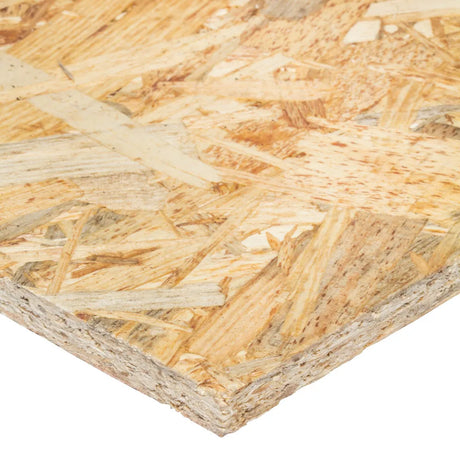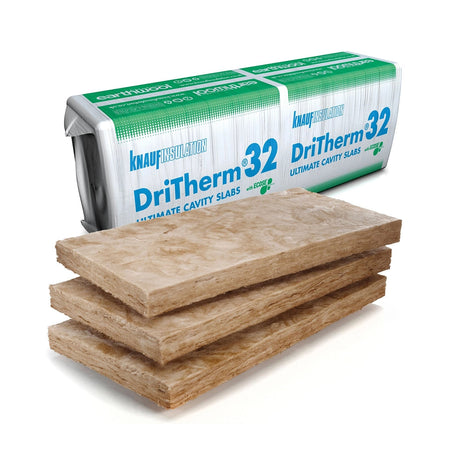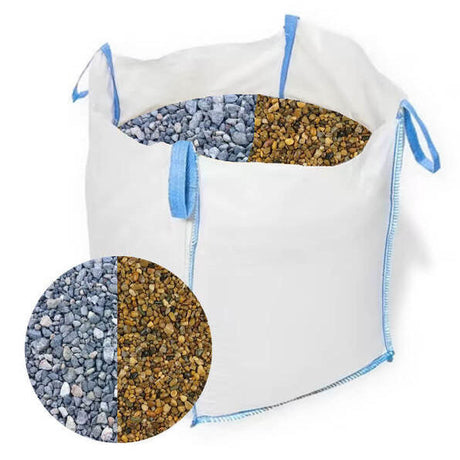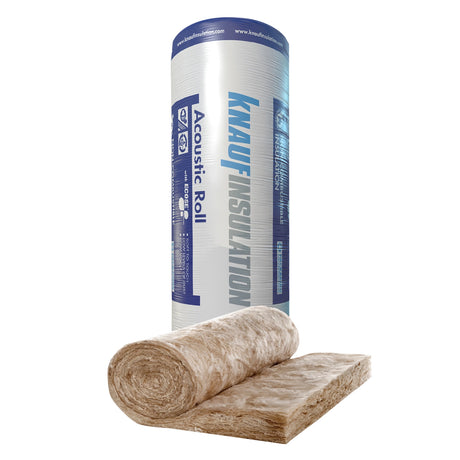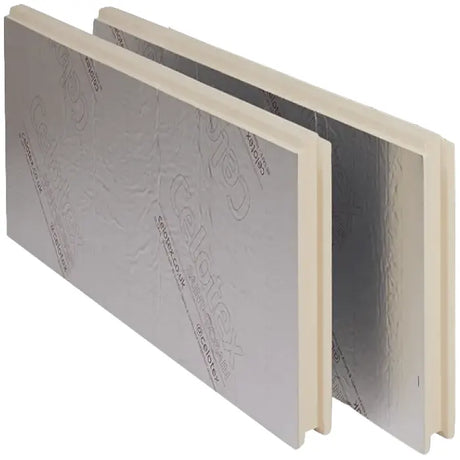Your Complete Comparison Guide to Loft Roll, PIR Board, and Multifoil Insulation
When it comes to making your home more energy-efficient and comfortable, proper loft insulation stands as one of the most impactful improvements you can make. With energy bills continuing to rise across the UK and environmental consciousness at an all-time high, investing in quality loft insulation isn't just about immediate comfort—it's about long-term savings and reducing your carbon footprint. At DIY Building Supplies, we've seen firsthand how the right insulation choice can transform a draughty, expensive-to-heat home into a warm, efficient sanctuary that costs significantly less to run.
The science behind loft insulation is compelling: heat naturally rises, and without adequate protection in your roof space, up to 25% of your home's warmth can simply escape through the roof. This means your heating system works harder, your bills climb higher, and your environmental impact increases unnecessarily. Modern insulation materials have evolved dramatically, offering homeowners and trade professionals sophisticated solutions that can reduce heat loss by up to 85% when properly installed.
Understanding Building Regulations Part L is crucial for any loft insulation project in England and Wales. Current regulations specify minimum thermal performance standards, with new builds requiring a U-value of 0.16 W/m²K or better, whilst existing dwellings should achieve 0.25 W/m²K when undertaking renovation work. These standards aren't arbitrary—they represent carefully calculated requirements designed to deliver meaningful energy savings whilst ensuring proper building performance. Meeting these standards not only ensures compliance but typically delivers payback periods of just 2-3 years through reduced heating costs.
Today's market offers three primary insulation solutions, each with distinct characteristics that make them suitable for different applications: traditional loft roll insulation, high-performance PIR boards, and innovative multifoil systems. Understanding the strengths and limitations of each option empowers you to make an informed decision that delivers optimal performance for your specific situation. Whether you're a seasoned DIY enthusiast tackling a weekend project or a trade professional seeking the most efficient solution for your clients, this comprehensive guide will equip you with the knowledge needed to choose and install the perfect insulation system.
What Is Loft Roll Insulation?
Loft roll insulation represents the traditional backbone of British home insulation, trusted by generations of homeowners and builders for its reliable performance and straightforward installation. Manufactured primarily from glass wool or mineral wool fibres, these flexible blankets are designed to fit snugly between ceiling joists and can be layered to achieve impressive thermal performance. The manufacturing process involves spinning molten glass or rock into fine fibres, which are then bound together using environmentally responsible binders to create a product that's both effective and safe to handle.
The beauty of loft roll insulation lies in its versatility and ease of use. These products arrive compressed in convenient packaging, expanding to full thickness once unwrapped, making them easy to transport and manoeuvre through standard loft hatches. Modern loft rolls feature advanced binding technologies that reduce dust and improve handling characteristics, whilst maintaining the excellent thermal properties that have made this insulation type so popular. The cellular structure traps thousands of tiny air pockets, creating an effective barrier against heat transfer whilst remaining breathable enough to prevent condensation issues.
Mineral wool and glass wool rolls excel in multiple performance areas beyond basic thermal insulation. Their excellent acoustic properties make them particularly valuable in homes where noise reduction is important, effectively dampening sound transmission between rooms and from external sources. Fire resistance is another significant advantage, with these materials typically achieving Class A1 or A2 fire ratings under BS EN 13501-1, providing peace of mind alongside thermal performance. This combination of thermal, acoustic, and fire performance, delivered at an affordable price point, explains why loft roll insulation remains the go-to choice for millions of UK homes.
Leading British manufacturers have refined their products to meet the specific demands of the UK market. Knauf Earthwool represents a significant advancement in mineral wool technology, using ECOSE Technology to create a bio-based binder that eliminates formaldehyde whilst delivering superior performance. Their products achieve excellent thermal conductivity values of 0.035 W/mK whilst offering improved handling characteristics. Superglass continues to innovate with their Multi-Roll range, providing versatile solutions that combine ease of installation with robust performance. Rockwool brings decades of expertise to their RWA45 and Rollbatt ranges, delivering products that excel in both thermal and acoustic applications whilst maintaining the durability that has made them a trusted name in the industry.
What Is PIR Insulation Board?
PIR (Polyisocyanurate) insulation boards represent the cutting edge of thermal insulation technology, engineered to deliver maximum performance in minimal thickness. These rigid foam boards consist of a polyisocyanurate core manufactured through a sophisticated chemical reaction that creates billions of tiny closed cells, each filled with a low-conductivity gas that provides exceptional thermal resistance. The manufacturing process involves precise control of temperature, pressure, and chemical composition to ensure consistent performance across every board, resulting in products that routinely achieve thermal conductivity values as low as 0.022 W/mK.
The foil facings applied to most PIR boards serve multiple purposes beyond simple moisture protection. These aluminium facings act as vapour control layers, preventing moisture migration into the insulation core whilst reflecting radiant heat back into living spaces. This reflective property can contribute an additional 10-15% improvement in thermal performance compared to unfaced alternatives, making foil-faced PIR boards particularly effective in roof applications where radiant heat gain or loss is significant. The robust facings also provide structural integrity, allowing the boards to maintain their properties under compression whilst providing a suitable surface for fixing systems.
Installation flexibility represents another key advantage of PIR boards. Their rigid structure makes them ideal for fitting between rafters, where they can be cut to precise dimensions and held securely in place without sagging or compression. This characteristic makes them particularly valuable in pitched roof insulation, where maintaining consistent thickness and avoiding thermal bridging is crucial for optimal performance. The boards can be easily cut with standard tools, shaped around obstacles, and fitted into irregular spaces, providing installers with the flexibility needed to achieve professional results even in challenging situations.
Celotex has established itself as the market leader in PIR technology, with their GA4000 range offering exceptional thermal performance alongside ease of handling and installation. Their products consistently achieve thermal conductivity values of 0.022 W/mK, allowing achievement of required U-values with thinner insulation depths. Ecotherm brings innovation to the sector with their Eco-Versal range, featuring products specifically designed for versatile applications across walls, roofs, and floors. Their focus on environmental responsibility, combined with excellent performance characteristics, makes them increasingly popular with environmentally conscious builders. Recticel Eurowall completes the premium PIR offering with products that combine exceptional thermal performance with robust construction, ensuring long-term reliability in demanding applications.
What Is Multifoil Insulation?
Multifoil insulation represents an innovative approach to thermal control, combining multiple layers of reflective aluminium foil with insulating core materials to create remarkably thin yet effective insulation systems. The science behind multifoil technology centres on controlling all three methods of heat transfer: conduction, convection, and radiation. Traditional insulation materials primarily address conductive heat transfer, but multifoil systems tackle radiant heat transfer through their reflective surfaces whilst using carefully designed air gaps and core materials to minimise convective and conductive losses.
The construction of quality multifoil insulation involves sophisticated layering of materials, each serving a specific purpose in the overall thermal system. High-purity aluminium foil layers provide the reflective barrier essential for radiant heat control, whilst wadding or foam cores create the air spaces necessary for optimal performance. The number of layers and their configuration varies between products, with some premium systems incorporating up to 21 individual layers. This multi-layer approach creates multiple air spaces, each contributing to the overall thermal resistance whilst maintaining remarkable thinness—typically just 20-50mm compared to 270-300mm for equivalent traditional insulation.
Space efficiency makes multifoil insulation particularly valuable in situations where depth is limited. Loft conversions, dormer windows, and properties with restricted headroom can benefit enormously from insulation systems that deliver excellent performance without consuming valuable space. Modern multifoil products can achieve thermal resistances equivalent to much thicker traditional materials, making them ideal for retrofitting projects where maintaining ceiling heights is important. Their flexibility also makes them suitable for applications where rigid boards would be difficult to install, such as irregular roof shapes or areas with numerous penetrations.
Installation characteristics of multifoil insulation differ significantly from traditional materials, requiring careful attention to air gaps and reflective surface orientation. The effectiveness of the reflective layers depends on maintaining proper air spaces—typically 20-25mm minimum—on at least one side of the material. This requirement means installation must be planned carefully to ensure optimal performance, but the lightweight nature and flexible format make handling and positioning straightforward even in confined spaces. The ability to combine multifoil with other insulation types opens up sophisticated hybrid systems that can deliver exceptional performance whilst addressing specific site constraints.
Comprehensive Comparison: Loft Roll vs PIR Board vs Multifoil
Understanding the performance characteristics of each insulation type enables informed decision-making based on your specific requirements and constraints. Thermal performance varies significantly between the three options, with each excelling in different aspects of heat transfer control. Loft roll insulation typically achieves thermal conductivity values of 0.032-0.040 W/mK, requiring depths of 270-300mm to meet current Building Regulations. PIR boards excel with conductivity values as low as 0.022 W/mK, achieving equivalent performance with just 100-120mm thickness. Multifoil systems achieve their thermal resistance through different mechanisms, with quality products delivering equivalent performance to 200mm+ of traditional insulation whilst requiring only 20-50mm thickness.
Installation considerations play a crucial role in material selection, particularly for DIY projects. Loft roll insulation offers the most straightforward installation process, simply requiring rolling out between joists and ensuring proper coverage without compression. The forgiving nature of the material allows for easy adjustment and fitting around obstacles. PIR boards require more precise cutting and fitting but offer the advantage of maintaining their shape and performance even when handled roughly. Multifoil installation demands the most attention to detail, requiring careful maintenance of air gaps and proper orientation of reflective surfaces, but the lightweight nature makes handling easier than heavier traditional materials.
Cost considerations extend beyond initial material purchase to include long-term value and installation time. Loft roll insulation offers the lowest upfront cost and fastest installation, making it ideal for budget-conscious projects or large areas where material costs could become significant. PIR boards command a premium price but deliver space savings that can be valuable in certain applications, whilst their superior thermal performance may justify the additional cost in energy savings over time. Multifoil systems typically fall between the two in terms of material cost but may require additional labour for proper installation, though their space-saving characteristics can provide value that extends beyond simple thermal performance.
The performance differences between these three insulation types become clear when examining their key characteristics side by side. Loft roll insulation excels in affordability and ease of installation, requiring 270-300mm thickness to achieve current Building Regulations compliance with thermal conductivity values of 0.032-0.040 W/mK. Its excellent acoustic properties and breathable nature make it ideal for standard applications where space isn't constrained. PIR boards deliver superior thermal performance with conductivity values of 0.022-0.025 W/mK, requiring only 100-120mm thickness whilst offering good fire performance and vapour resistance. Multifoil systems maximise space efficiency with just 20-50mm thickness, delivering thermal performance equivalent to 200mm+ of traditional insulation, though installation requires careful attention to air gaps and proper orientation.
Cost considerations reveal distinct advantages for each option depending on project requirements. Loft roll insulation offers the most affordable material cost and fastest installation, making it ideal for large areas or budget-conscious projects. PIR boards command higher initial costs but deliver space savings that can eliminate structural modifications, whilst their superior thermal performance provides enhanced energy savings. Multifoil systems typically fall between the two in material cost but offer exceptional value where space constraints would otherwise require expensive structural work to accommodate thicker insulation.
How to Choose the Right Insulation Type for Your Loft
Selecting the optimal insulation solution requires careful evaluation of your specific circumstances, constraints, and objectives. Available space often represents the primary determining factor, particularly in older properties where ceiling heights may be limited or where maintaining headroom is crucial. Properties with shallow joist depths may find traditional loft roll insulation challenging to accommodate without significant build-up, making PIR boards or multifoil systems more practical solutions. Conversely, properties with generous loft spaces may benefit from the cost-effectiveness and proven performance of traditional roll insulation.
Budget considerations must encompass both immediate costs and long-term value. Whilst loft roll insulation offers the lowest initial outlay, the total project cost should include any additional work required to accommodate the material—such as raising loft boarding or modifying storage arrangements. PIR boards may justify their higher cost through space savings that eliminate the need for structural modifications, whilst their superior thermal performance can deliver enhanced energy savings that improve the return on investment. Multifoil systems often provide the best solution where space is at an absolute premium, even if the initial cost per square metre appears higher than alternatives.
Technical requirements specific to your property will influence material selection significantly. Properties in exposed locations may benefit from the superior thermal performance of PIR boards or multifoil systems, where achieving low U-values in limited thickness becomes crucial. Buildings with complex roof geometries may favour the flexibility of loft roll insulation, which can easily accommodate irregular shapes and spaces. Sound insulation requirements might favour mineral wool products, which excel in acoustic applications, particularly in properties where noise transmission between floors is a concern.
Installation capability and timeframe represent practical considerations that can influence material choice. DIY enthusiasts with limited experience may find loft roll insulation more forgiving and easier to install correctly, whilst trade professionals might prefer the precision and efficiency possible with PIR boards. Properties requiring rapid completion might benefit from the speed of loft roll installation, whereas projects where maintaining living space during work is important might favour the minimal disruption possible with thin multifoil systems. Combining different insulation types can provide sophisticated solutions that optimise performance whilst addressing specific constraints—for example, using multifoil between rafters with loft roll over joists to maximise thermal performance whilst maintaining practical access.
Installation Tips for Each Insulation Type
Successful loft roll installation begins with proper preparation and understanding of the material characteristics. Before starting, ensure adequate lighting in the loft space and lay temporary boarding to provide safe working surfaces without compressing the insulation. When rolling out mineral wool or glass wool, avoid compression, which significantly reduces thermal performance—the effectiveness depends on maintaining the air spaces within the material. Start by fitting insulation between joists, ensuring full coverage without gaps, then add a second layer perpendicular to the first to eliminate thermal bridging through the timber structure.
Cutting and trimming loft roll requires attention to achieving proper fit without waste. Use a sharp knife and compress the material slightly during cutting to achieve clean edges, but allow it to expand fully once in position. Around obstacles such as cables or pipes, cut neat holes rather than compressing the insulation around them. Pay particular attention to edges and perimeters, where gaps can create significant thermal bridges. When working with vapour control layers or breathable membranes, ensure any cuts are properly sealed to maintain the integrity of the moisture management system.
PIR board installation demands precision in measuring and cutting to achieve optimal performance. Use appropriate cutting tools—a fine-toothed saw or sharp knife—to achieve clean, square cuts that fit tightly between structural members. Gaps larger than 2-3mm should be filled with expanding foam or additional insulation material to prevent thermal bridging. When fitting between rafters, ensure boards are cut to the exact width, using gentle pressure to achieve a snug fit without compression. Support boards adequately during installation to prevent damage, and protect exposed edges where necessary to maintain long-term performance.
Fixing PIR boards requires appropriate mechanical fixings or adhesives depending on the application. When fixing to solid surfaces, use appropriate plugs and screws that don't create significant thermal bridges. In rafter applications, friction fit may be sufficient for boards cut to the correct size, though additional support may be necessary for larger pieces. Where boards need to be held in place during installation of additional layers, temporary supports can prevent movement without compromising the insulation integrity. Always follow manufacturer's guidelines for specific products, as fixing requirements can vary based on facing materials and intended application.
Multifoil installation requires meticulous attention to maintaining air gaps and proper orientation of reflective surfaces. The effectiveness of multifoil systems depends critically on maintaining the specified air gaps—typically 20-25mm minimum—adjacent to at least one reflective surface. Failure to maintain these gaps can reduce performance by 50% or more, making careful installation essential. Use appropriate battening systems to create and maintain the required air spaces, ensuring the multifoil is properly supported without compression.
Sealing and taping joints in multifoil systems is crucial for both thermal performance and moisture management. Use appropriate aluminium tape to seal all joints, overlaps, and penetrations, ensuring complete continuity of the reflective barrier. Pay particular attention to edges and interfaces with other building elements, where gaps in the reflective barrier can significantly compromise performance. The tape application should be smooth and complete, without air bubbles or poor adhesion that could fail over time.
Recommended Products Available at DIY Building Supplies
Our carefully curated selection of insulation products represents the finest offerings from Britain's leading manufacturers, chosen for their proven performance, reliability, and value. In the loft roll category, Knauf Earthwool DriTherm Cavity Slab 32 stands out as an exceptional choice, combining superior thermal conductivity of 0.032 W/mK with excellent handling characteristics thanks to its advanced ECOSE Technology. This formaldehyde-free product offers outstanding thermal and acoustic performance whilst being pleasant to work with, making it ideal for both trade professionals and DIY enthusiasts. Available in various thicknesses from 50mm to 200mm, it provides flexibility for different applications and performance requirements.
Superglass Multi-Roll 44 represents outstanding value in the glass wool category, delivering thermal conductivity of 0.044 W/mK with the convenience of split rolls that adapt to different joist spacings. This versatile product excels in standard loft applications where cost-effectiveness is important without compromising on performance. The split-roll format reduces waste and simplifies installation, making it particularly popular with both professional installers and homeowners tackling DIY projects. Its proven track record and competitive pricing make it an excellent choice for larger projects where material costs are a significant consideration.
In the PIR board category, Celotex GA4000 sets the standard for high-performance insulation, achieving thermal conductivity values of 0.022 W/mK through advanced polyisocyanurate technology. The aluminium foil facings provide excellent vapour resistance and reflective properties, making this product ideal for roof applications where space is limited and maximum performance is required. Available in thicknesses from 25mm to 200mm, GA4000 provides solutions for virtually any application whilst maintaining consistent quality and performance characteristics that have made Celotex the preferred choice of many building professionals.
Ecotherm Eco-Versal offers an environmentally conscious alternative without compromising performance, achieving thermal conductivity of 0.023 W/mK whilst incorporating recycled content and responsible manufacturing practices. This versatile product performs excellently across walls, roofs, and floors, making it ideal for projects where material consolidation is beneficial. The robust construction and excellent thermal properties make it suitable for demanding applications, whilst the environmental credentials appeal to increasingly sustainability-conscious customers.
Our multifoil selection features products specifically chosen for their proven performance and installation characteristics. These innovative systems offer solutions for applications where traditional insulation would be impractical due to space constraints or specific performance requirements. Available in various configurations to suit different applications, from simple reflective barriers to sophisticated multi-layer systems that deliver exceptional thermal performance in minimal thickness.
Making the Right Choice for Your Project
The selection of appropriate loft insulation represents a decision that will impact your property's comfort, energy efficiency, and value for decades to come. No single insulation type proves optimal for every situation—success lies in matching the characteristics of each option to your specific requirements, constraints, and objectives. Properties with generous loft spaces and budget constraints may find traditional loft roll insulation provides excellent value and proven performance, whilst buildings with limited headroom or specific performance requirements might benefit from the space efficiency of PIR boards or multifoil systems.
Consider the broader context of your property's thermal performance when making insulation decisions. Loft insulation works most effectively as part of a comprehensive approach to building thermal improvement, including wall insulation, window upgrades, and attention to air leakage. The best insulation choice for your loft should complement these other measures whilst providing the specific performance characteristics needed for your situation. Professional assessment can help identify the optimal combination of measures and materials to achieve your comfort and efficiency goals.
The installation process and long-term maintenance requirements deserve careful consideration in your decision-making process. Products that appear more expensive initially may provide better value when installation costs and long-term performance are considered. Similarly, materials that require more careful installation may justify the additional effort through superior long-term performance. Understanding these factors helps ensure your insulation investment delivers optimal returns through reduced energy costs, enhanced comfort, and improved property value.
At DIY Building Supplies, we understand that every project is unique, with specific challenges and opportunities that require expert guidance to navigate successfully. Our experienced team combines extensive product knowledge with practical installation experience to help you identify the optimal solution for your specific requirements. Whether you're planning a straightforward loft insulation upgrade or tackling a complex conversion project, we're here to provide the technical support and quality materials needed to achieve outstanding results.
Expert Support When You Need It Most
The complexity of modern insulation systems and building regulations means that expert guidance can prove invaluable in achieving optimal results. Our technical support team at DIY Building Supplies brings decades of combined experience in insulation specification and installation, helping customers navigate the challenges of achieving compliance whilst optimising performance and value. From initial product selection through installation planning and troubleshooting, we're committed to ensuring your project succeeds.
Understanding Building Regulations and achieving compliance represents just the starting point for successful insulation projects. Our team can help you understand how different insulation options impact U-value calculations, what additional measures might be required to achieve compliance, and how to optimise your approach for both performance and cost-effectiveness. This guidance proves particularly valuable in renovation projects, where existing construction details can create unique challenges and opportunities.
Installation support extends beyond product selection to include practical guidance on measurement, cutting, fixing, and finishing. Our team understands the real-world challenges of working in confined loft spaces, dealing with irregular construction details, and achieving professional results with the tools and skills available. Whether you're a seasoned trade professional seeking technical specifications or a DIY enthusiast planning your first insulation project, we're here to provide the support needed to achieve outstanding results.
Ready to improve your home's energy efficiency? Browse our comprehensive range of loft roll insulation, PIR boards, and multifoil systems to find the perfect solution for your project. Still unsure which option is right for your specific situation? Contact our expert team today for personalised advice and technical support that ensures your insulation project delivers outstanding results. At DIY Building Supplies, we're not just suppliers—we're partners in your project's success.



